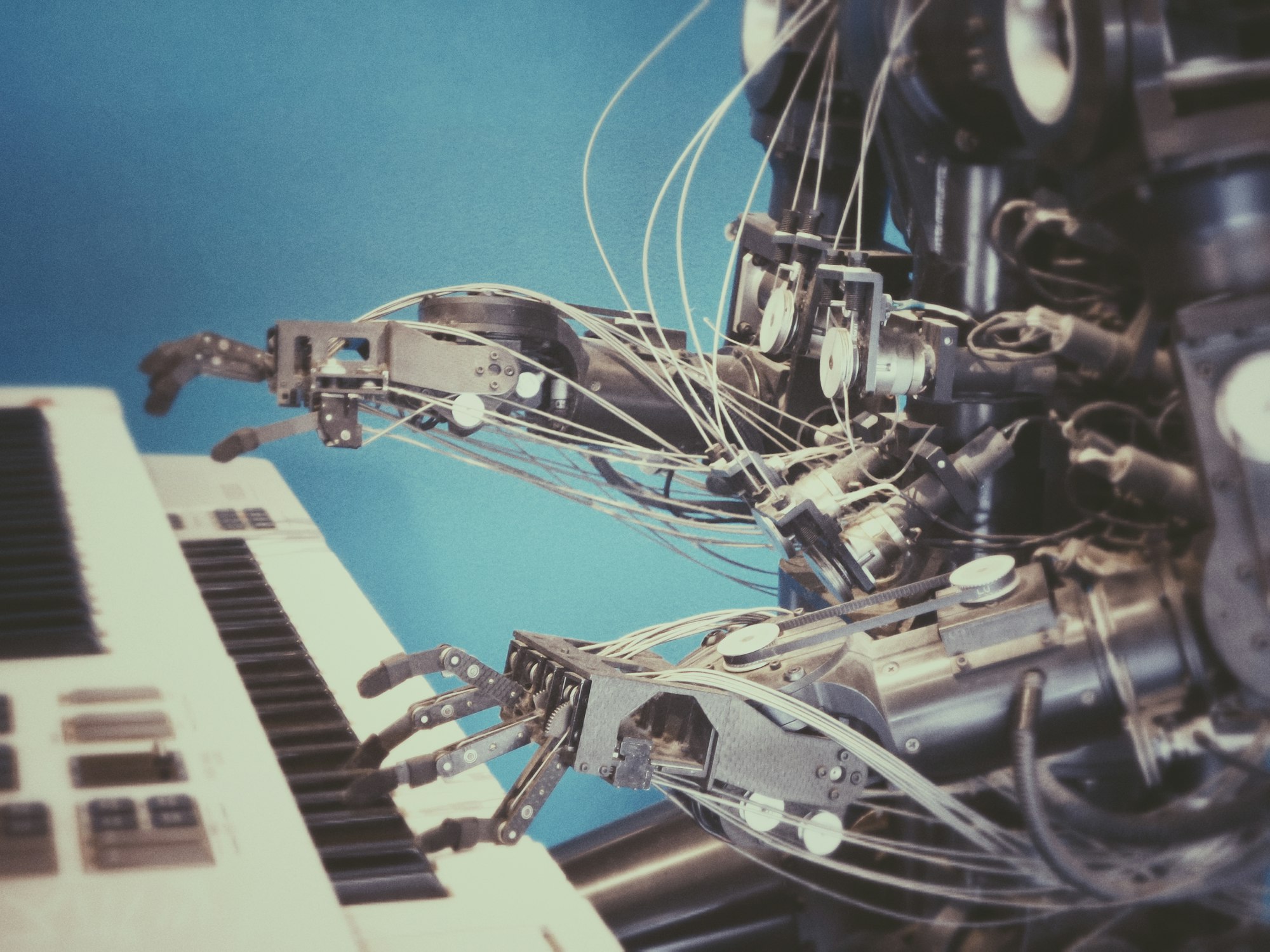
The water jug problem is a classic AI puzzle that involves finding a way to measure a specific volume of water using two jugs of different capacities. It challenges problem-solving and algorithmic thinking in AI.
In the world of artificial intelligence and computer science, there are countless problems that researchers and enthusiasts tackle to develop and test algorithms. These challenges often serve as a proving ground for problem-solving techniques and algorithms. One classic puzzle that has captured the imagination of problem solvers and even made its way into popular culture is the Water Jug Problem. In this blog post, we'll deeply dive into the essence of this intriguing problem, its historical significance, and how artificial intelligence can be harnessed to find solutions.
The Water Jug Problem may sound deceptively simple, but it's a fascinating example of a problem that has stumped many, whether they're novices or seasoned experts in AI. The heart of the challenge lies in using two jugs—one smaller with a capacity of 'x' liters and one larger with a capacity of 'y' liters—with no measurement markings to measure a specific volume of water, 'z' liters. Can you fathom how to do it? It's a puzzle that has piqued the curiosity of many and illustrates the power of problem-solving techniques, particularly in the realm of artificial intelligence.
As we embark on this exploration of the Water Jug Problem, we'll start with a clear problem statement and dive into its historical significance. From there, we'll delve into how AI can be applied to tackle this puzzle, examining the fundamental operations available and the search algorithms that can be employed to find a solution. So, whether you're a seasoned AI enthusiast or simply curious about problem-solving, read on to discover the secrets behind this classic challenge.
The Water Jug Problem

Imagine you have two jugs, one smaller with a capacity of 'x' liters and one larger with a capacity of 'y' liters. These jugs lack measurement markings, making the task at hand more challenging. Your goal? To measure a specific volume of water, 'z' liters, using these two jugs. Simple, right? Well, not quite.
The problem statement is straightforward:
- You have two jugs of different sizes, x liters, and y liters.
- There are no measurement markings on the jugs.
- You can fill the jugs from a water source, empty them, and pour water between them.
- Your objective is to measure exactly 'z' liters of water.
This seemingly simple puzzle can quickly become a brain teaser, as you grapple with the limitations of the available tools. But that's precisely what makes the Water Jug Problem such an interesting challenge, particularly in the field of artificial intelligence.
Let's break down the key components of this problem:
Jug Capacities
You have two jugs, one smaller and one larger, with capacities of 'x' and 'y' liters, respectively. These values can vary depending on the specific instance of the problem. For example, you might have a small jug with a capacity of 3 liters and a large jug with a capacity of 5 liters.
Lack of Measurement Markings
Importantly, neither jugs has any measurement markings, so you can't simply pour a specific number of liters at a time. This adds an extra layer of complexity to the problem since you have to rely on other methods to measure the water.
The Objective
The ultimate goal is to measure a precise volume of water, 'z' liters, using these two jugs. The value 'z' can also vary depending on the specific problem instance. For instance, you might need to measure exactly 4 liters of water.
Exploring the Challenge
The Water Jug Problem is a thought-provoking puzzle that illustrates problem-solving techniques in AI. It requires creative thinking and careful planning to use the limited resources at your disposal—two jugs, no measurements—to achieve a specific measurement.
Historical Significance
The Water Jug Problem is not just a mathematical puzzle; it has etched its place in history and even popular culture. This seemingly innocuous problem has had a significant impact beyond the world of algorithms and AI.

The Water Jug Problem gained widespread recognition through its appearance in the movie "Die Hard 3" (officially titled "Die Hard with a Vengeance"). In this action-packed film, the character John McClane, portrayed by Bruce Willis, is thrust into a high-stakes situation where he must diffuse a bomb set to wreak havoc in New York City. The catch? The bomb requires defusing by measuring precisely 4 gallons of water, and McClane is armed with only two jugs: one with a capacity of 3 gallons and the other with a capacity of 5 gallons.
The tension in this cinematic scenario is palpable. John McClane, an action hero, must employ his problem-solving skills to tackle this real-life puzzle, using two simple jugs to save the day. This memorable scene not only showcases the intensity of the Water Jug Problem but also brings a seemingly abstract mathematical challenge into the public eye.
Cultural Impact
The representation of the Water Jug Problem in "Die Hard 3" transformed it from an obscure mathematical exercise into a cultural touchstone. It sparked audiences' curiosity worldwide, prompting many to ponder the puzzle and even attempt to solve it themselves. This newfound interest introduced a broader audience to the concept of problem-solving and the application of mathematical thinking in practical situations.
The problem's cultural impact extends beyond the film. It has become a point of reference in discussions about problem-solving and has appeared in various forms in literature, puzzles, and educational materials. It is a testament to the enduring power of simple yet intriguing challenges that stimulate our intellectual curiosity.
Problem-Solving in AI

Now that we've explored the historical significance of the Water Jug Problem let's shift our focus to the practical application of solving this intriguing challenge using artificial intelligence (AI).
Solving the Water Jug Problem is not just a pastime but an excellent illustration of how AI algorithms can be harnessed to tackle real-world puzzles and challenges. The essence of the problem is to find a sequence of actions that will lead to the desired amount of water in one of the jugs. These actions can include:
- Filling a jug from the water source.
- Emptying a jug.
- Pouring water from one jug into another until the pouring jug is empty or the receiving jug is full.
To solve this problem, AI algorithms are employed, and they come in various flavors, depending on the specific objectives and constraints of the problem. Here are some key aspects to consider:
Search Algorithms
Search algorithms play a crucial role in solving the Water Jug Problem. These algorithms systematically explore the potential state space of the problem to find a solution. There are different types of search algorithms, including:
Breadth-First Search (BFS): This algorithm explores all possible states starting from the initial state and moving outward in layers. It is particularly useful for finding the shortest sequence of steps to a solution.
Depth-First Search (DFS): Unlike BFS, DFS explores as far down a branch of the state space as possible before backtracking. It is useful when you want to explore a particular solution path.
A Search:* A* search is a more advanced algorithm that combines the benefits of both BFS and DFS. It uses a heuristic to guide the search towards the solution while considering the cost of each step.
Creative Problem Solving
Solving the Water Jug Problem requires creative thinking. AI algorithms must decide which actions to take at each step to reach the desired state. The challenge lies in effectively utilizing the available operations (filling, emptying, pouring) to measure the required volume of water with limited resources.
AI in Action: Solving the Water Jug Problem

To illustrate AI in action, we can consider an example where you have a small jug with a capacity of 3 liters, a large jug with a capacity of 5 liters, and you need to measure 4 liters of water. Using search algorithms, AI can guide you through the sequence of steps, demonstrating how the problem can be solved efficiently.
Initial State: In the beginning, both jugs are empty.
Step 1 - Fill the Large Jug: You can start by filling the large jug with 5 liters of water from the water source. The state now becomes (0, 5) liters, where the first number represents the small jug, and the second represents the large jug.
Step 2 - Pour from Large to Small: Pour water from the large jug into the small jug. After this operation, the state becomes (3, 2) liters because the small jug can hold only 3 liters of the 5.
Step 3 - Empty the Small Jug: Empty the small jug. The state is now (0, 2) liters.
Step 4 - Pour from Large to Small Again: Pour water from the large jug into the small jug, filling the small jug to its capacity of 3 liters. The state becomes (3, 0) liters.
Step 5 - Fill the Large Jug Again: Fill the large jug once more. The state now becomes (3, 5) liters.
Step 6 - Pour from Large to Small: Pour water from the large jug into the small jug until the small jug is full. After this step, the state becomes (4, 4) liters, and you have successfully measured 4 liters of water in the small jug.
In this example, the AI-driven search algorithm (in this case, you can consider using a breadth-first search) guided the sequence of actions to reach the desired state efficiently. The algorithm ensured that you followed the steps that ultimately led to measuring precisely 4 liters of water in the small jug, meeting the problem's goal.
This demonstration highlights how AI can be employed not only to solve the Water Jug Problem but also to solve a wide range of real-world problems that involve decision-making and resource management. By selecting the right sequence of actions based on a well-defined set of rules and the problem's constraints, AI algorithms can efficiently navigate complex state spaces to find solutions.
Conclusion

In problem-solving, the Water Jug Problem is a timeless example of the power of creativity and the application of artificial intelligence. As we conclude our exploration of this classic puzzle, we've witnessed its historical significance, its portrayal in popular culture, and its invaluable role as a learning tool.
The Water Jug Problem isn't just a puzzle; it's a gateway to a world of intellectual curiosity. It challenges us to think outside the box, employing AI algorithms to find efficient solutions to seemingly insurmountable obstacles.
The puzzle serves as a testament to the potential of AI in addressing complex, real-world problems. It showcases how algorithms and creative thinking can combine forces to surmount even the most perplexing challenges.
So, whether you're a seasoned AI enthusiast or a curious problem solver, remember that the Water Jug Problem is just one of many intriguing challenges awaiting your exploration. It's a reminder that the path to solutions is often as rewarding as the solution itself.
Thank you for joining us in unravelling the mysteries of the Water Jug Problem. We hope it has sparked your curiosity and inspired you to dive deeper into the captivating world of AI and problem-solving. To learn how we leverage AI to solve business problems, click here to learn more.
learn